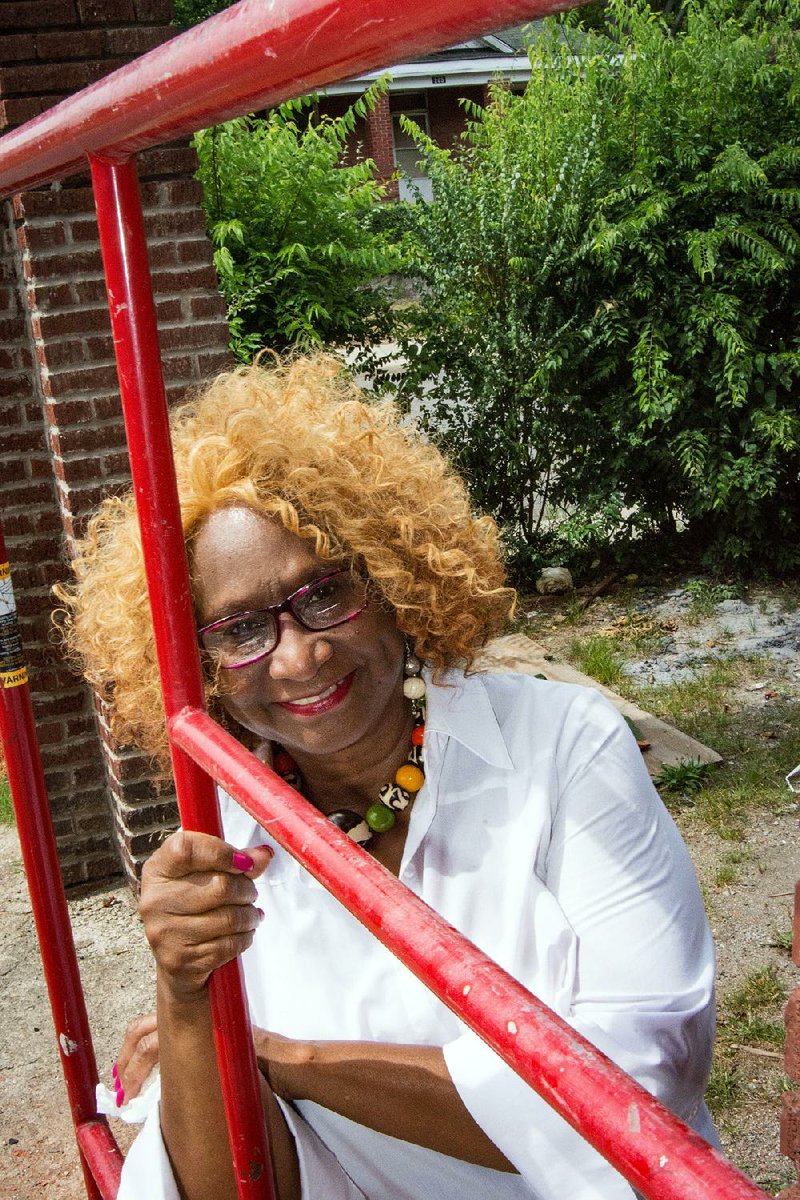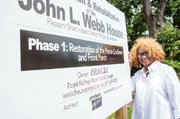Cheryl Batts remembers the Hot Springs neighborhood from her childhood as being inhabited by professionals with well-maintained houses and neat lawns. Children played outside, and neighbors looked out for one another.
It was a different story when she returned in 1994. Houses in the traditionally black neighborhood were boarded up, there were empty lots and overgrown lawns. "I was born and raised in Hot Springs," she says. "I came home and I wanted to know what happened to the neighborhood. That was my first question." (Her family moved out of state when she was a preteen.)
A friend told Batts it was the same thing that has happened in a lot of communities. "People worked all their lives for their homes and saved them for their children, but the economy changed and the children moved away and didn't come back." The children would struggle as absentee landlords. Renters wouldn't take care of the houses and thus their dilapidated condition now, she says.
Batts is working to preserve the history of the neighborhood and build a sense of community again.
She has helped the neighborhood, now known as the Pleasant Street Historic District, get on the National Register of Historic Places. And, she established PHOEBE (People Helping Others Excel by Example), which works with youths ages 12-18 in the community. One of the nonprofit's programs is the Uzuri Project Youth Institute, which pairs youths with older residents. The youngsters interview and gather oral histories from the old-timers about black history in Hot Springs.
"Through that inter-generational oral exchange," Batts says, "we get lots of good histories and good information, or it gives us a total new area to research.
"The kids ask questions, like 'Do you remember what it was like in Hot Springs when you were growing up?' Or, they ask crazy questions that tickle the senior [citizens], like 'Were you on a covered wagon?'"
When Batts first began documenting these stories, one name kept coming up -- John Lee Webb. Webb was a prominent black businessman and builder active in many social and civic organizations. He donated the Emma Elease Webb Community Center, named for his daughter, to the neighborhood and built the Woodmen of the Union building, which contained the executive offices of the fraternal organization, a hospital, nurse training school, bathhouse, bank and auditorium.
The Webb home at 403 Pleasant St. is a large stately brick Queen Anne-style with a turret and green tile roof. As with the rest of the neighborhood, the structure had seen better times. Batts says she'd drive by the house, just sigh and keep on driving.
But then something unexpected happened. A woman bought the house after the death of its owner, and Batts met with her to share the house's history. She hoped to make sure the new owner realized what a treasure she had. After a while, the owner called Batts with a jaw-dropping offer. Batts says the owner realized she didn't have the time to restore the house and wanted to give it to PHOEBE. She says the woman told her, "If anybody can make this happen I know you can."
Once restored, the Webb house will become the headquarters of PHOEBE, with galleries and a meeting room on the bottom floor and offices and activity spaces for the youths upstairs. The house will showcase the neighborhood's history, with photos of Webb, other community members and the historic neighborhood lining the walls.
The restoration of the John Lee Webb House is an extension of Batts' efforts to tell the neighborhood's history, says Preserve Arkansas Executive Director Rachel Patton. "The Webb House is one of the most architecturally significant buildings in the Pleasant Street Historic District."
Webb and his family lived there from the 1920s to the 1940s, a time when Webb's civic leadership and position made him one of the most respected men in the spa city. "The restoration of the Webb House is a beacon of hope in the neighborhood. I think that people can point to it with pride," Patton adds.
The restoration is in its first phase -- protecting the structure with a new roof, which was recently completed. It also includes the weatherization of the building and windows. Next will be to restore the interior and replace a garage that was torn down.
John Kirk, director of the University of Arkansas at Little Rock Institute on Race and Ethnicity, says, "Cheryl's efforts are helping to preserve an important part of community history and identify what might otherwise be forgotten, and in doing so they are continuing the work and legacy of Webb and the Woodmen of the Union fraternity in providing community help and resources today."
More about the Uzuri Project Youth Institute is available at uzuriproject.org. To make a donation or learn more about the restoration of the John Lee Webb House visit the Save the John Lee Webb House Facebook page.
High Profile on 07/23/2017

